If you’re a regular reader of this blog, you won’t have forgotten the tale from earlier this year about the arcade game Aztarac released by Centuri back in 1983. If that doesn’t ring any bells, or if you’re new to the story, please take five minutes to read up on the story here.
If clicking on the link feels like too much hard work, the abridged version is thus:
- A Florida collector by chance purchases a super-rare arcade machine released in 1983 called Aztarac – one of only 200 ever built
- That very same machine turns out to have been owned personally by the creator of the game; none other than the late Tim Stryker
I did promise to follow-up on the article at some point, and this week seems an opportune time to do so, as a great deal has happened since then.

Amongst the huge amount of feedback I got about the original piece, was a note from Tim’s father, Jerry Stryker. Jerry was kind enough to share some great insight into his son’s view of the world at the time he wrote the game in the early 80s, which then led to other members of Tim’s family reaching out and sharing more information.
During this time the cabinet itself was starting on a new journey of restoration. Now that this amazing cabinet had been found, the committment made by its new owner Jonathan Taylor right from the start, was to reveal the cabinet in time for the annual Free Play Florida event in November this year. So extraordinary was the game’s story, everyone felt compelled to get the machine not only restored and fully working again, but back out in front of the public for them to play. This was to be a truly historical moment, and an opportunity to shine a light on a relatively unknown game, and of course Tim’s life and achievements.
I was approached by the team at Free Play and asked if I would host a talk about Tim, Aztarac and the general state of the arcade business back in 1983. I thought this was a great idea – Aztarac’s shelf life on the arcade floors of America was short-lived – very few people have even heard of the game, let alone had a chance to play it, and fewer still would have any insight into the game’s creator. So the race was on. While I started prepping some slides and information ready for the talk, behind the scenes over in Florida, Jonathan had started engaging various people for help with restoring the game.
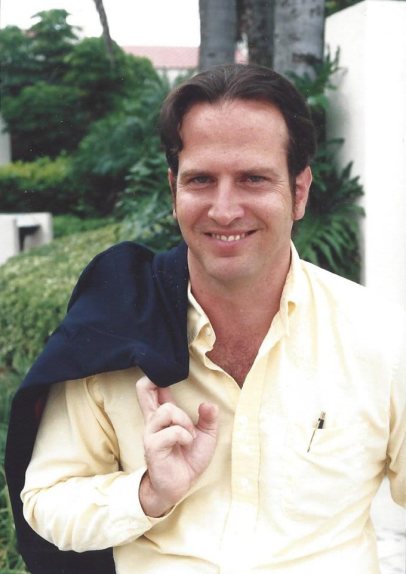
Talking with Tim’s family has been very humbling over the last few months. Neil Hernandez (the guy who found the machine) and I came to realize that Tim Stryker’s work on the game needed to be brought to the fore along with the cabinet. The Strykers shared a great snippet of a letter that Tim wrote to his father in May 1982. It revealed a young man who clearly wanted to make his mark in the world, and saw the explosion of video games in the early 80s as an opportunity to do just that:
I’ll be starting work shortly as a video game designer. Don’t feel too bad about it. As I think I told you, I’ve really been trying hard to get a job as a computer architect, but to no avail….So what I say is: fine, if all of these dingbats in their three-piece suits don’t want the services of a hard-working fellow who happens to be capable of designing them the best god damned microprocessor there ever was, then, fine, they won’t have him. Meanwhile I’ll see if I can’t scare up some interest in some other field. Video games might seem like going to the opposite extreme, but it’s big business, and I know of few other areas in which one’s ability to produce is so severely tested or so readily apparent when present.
Clearly frustrated with the brick walls he was experiencing in trying to get a foothold in the tech world back then, Tim’s determination to make a name for himself was palpable:
I’ve come to the realization that nobody is ready to believe that you’re worth a half crap unless and until they see, first hand, that it’s the case. Designing a few hit video games can perhaps result in the conveyance of that first-hand knowledge to a sizeable fraction of the engineering population. Then watch out! (if I sound angry, it’s because I am.)
That hell-bent enthusiasm to create an amazing video game, must have come through loud and clear to Centuri at his interview, and he was hired on the spot. The pressure on Tim must have been immense – in those days there would have been no army of staff available to him to help create a game – he was on his own, designing graphics, sounds, gameplay and everything you see on-screen. Reading his letter above, Tim clearly had his own longer-term agenda, which obviously didn’t involve Centuri, but they clearly saw something in him that was going to create a hit game for them.
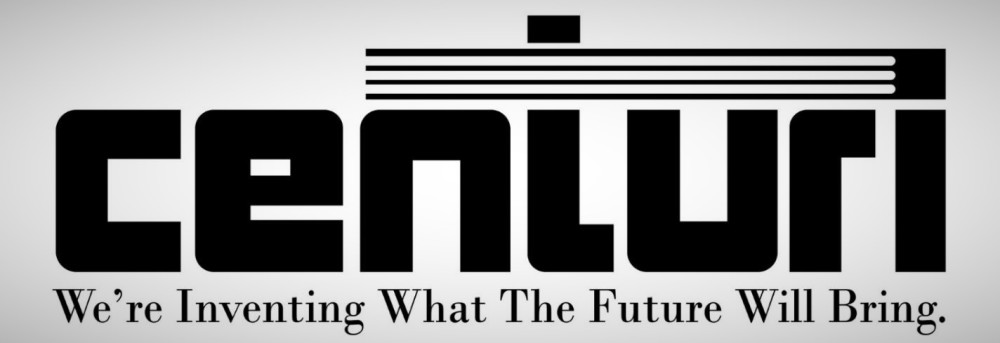
All eyes would have been on this hot-shot kid from out-of-town to produce something special. Remember, here was a company that up to that point, had produced just three of its 22 released games in-house. The rest were bought licences from other manufacturers.
And I suspect Tim relished the challenge – by putting himself under such pressure, he knew he would produce his best work. (And having now played the game I can tell you that he produced something extraordinary – but more on that later).
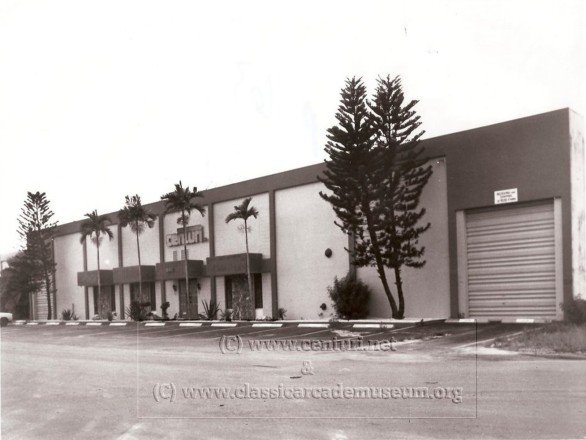
But back to the present day, and the cabinet’s new owner Jonathan was now under considerable pressure himself. Plugging the Aztarac into the wall created the sum total of zero. The game was dead, and no-one in Florida had a clue what was wrong with it. With Aztarac, that’s just the start of your problems. The bigger issue is who can actually fix this almost unheard of 35-year-old game? To state the obvious for a minute, with such a rare title, there will have been very few around to break down in the first place! Got a busted Space Invaders or Pac-Man? Repair guys are a dime a dozen. As for a game like Aztarac?
There was only one person in the world who could be trusted to repair the main board properly, and that person was Andy Welburn. Known in the hobby as the go-to guy for obscure arcade board repairs, Andy agreed to get involved with the project once he learned about the back story surrounding the find. The PCBs were removed and flown up to San Francisco, and hand delivered by Jonathan to Andy, and he got to work. He told me about the challenge he faced:
It took a lot of time to track down the various faults on the board. The main CPU board was inactive because of a bad clock chip – once I got that working again, there were issues further down the line which needed diagnosing and fixing. But the video board was where the real fun began. It uses a design unlike all other vector games, with a digital to analogue, and back to digital control signal flow that caught me off guard as I had not seen that before. The main vector state machine prom was also bad but was quickly identified as such and replaced. I got there in the end, but yeah, it was long and intense hard work!
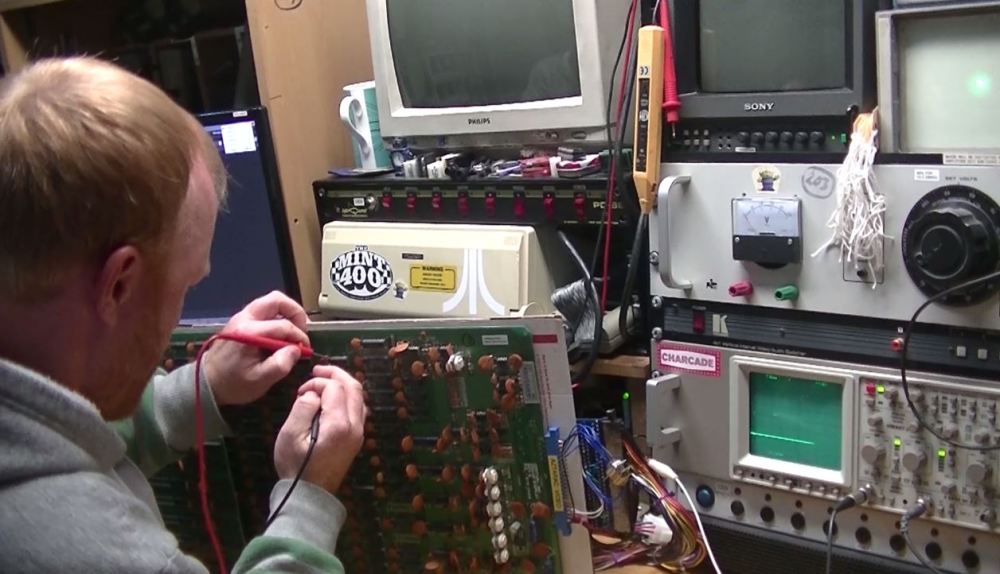
So with the PCB repaired, Jonathan and the rest of the team got working on the rest of the game. There’s no point plugging in a known working board to a power supply that’s faulty (I am guilty of this stupidity more times than I care to admit) – Bill Stillwell stripped and rebuilt the power unit, and in the process, discovered the reason it failed in the first place – a simple cold solder joint.
Florida collector Brian Jones was engaged to restore the cabinet, and did an incredible “museum quality” restoration – literally cleaning everything down to the last nut and bolt, to get the machine looking like it had just rolled off the factory floor.

And finally the monitor – this magnificent cutting edge WG6401 vector monitor had only been used in two arcade titles. The team sourced a multitude of replacement parts and were able to bulletproof where they could all the major weak spots on the circuitry.
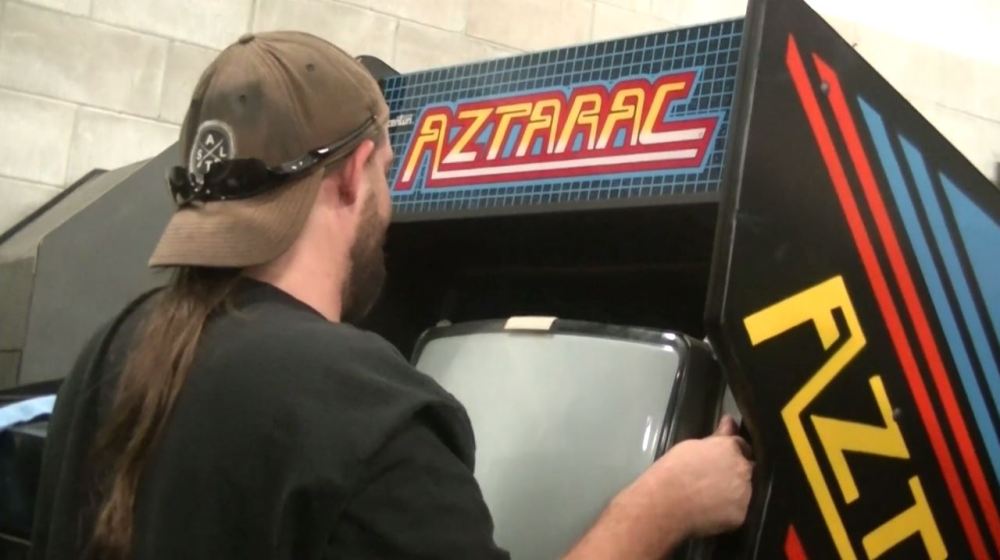

Ben Souders was leading the rebuild of the cabinet, and after over 200 hours worth of total work on this one machine, the team took a deep breath and switched on for the first time…
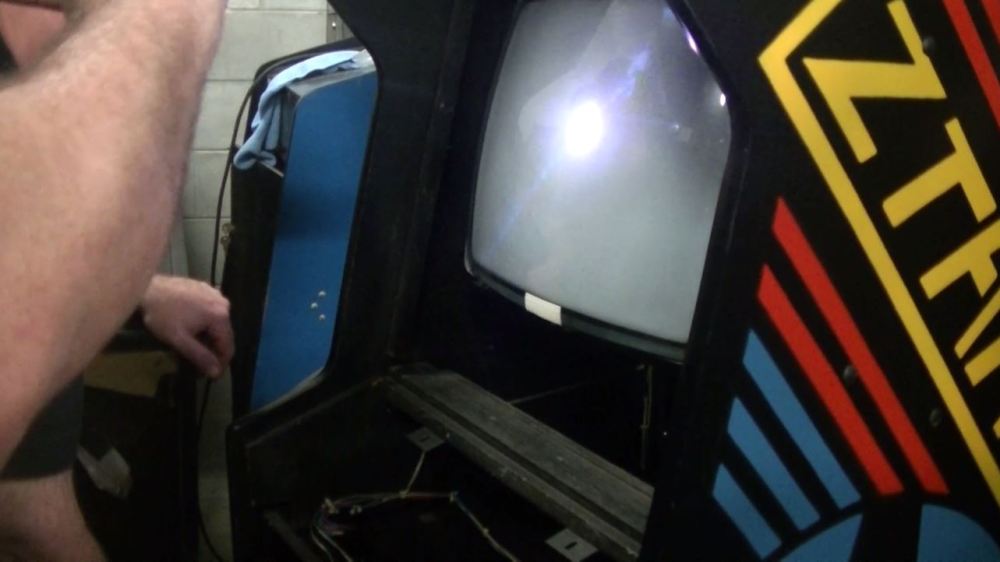
This was the first aborted attempt, the team steadied themselves, took a step back and checked their work. They discovered an unconnected grounding wire to the monitor. After reconnecting everything back together, they held their collective breaths…
The game came on perfectly at the second time of asking. The big reveal at Free Play Florida was on.
During our dialogue with Tim Stryker’s family in the months leading up to the show, it became clear that there was a growing interest among them to attend the show, to see the presentation and of course to view and play the machine which had been in the Stryker house in Plantation, Florida all those years ago. Sure enough, come the event in late November, a total of 14 members of Tim’s immediate family arrived in Orlando for the big reveal.
Much to our surprise, the family dug out some old photos. Finally, we were able to confirm that Tim did indeed own this Aztarac cabinet – this photo was taken in 1992 at Tim’s house:
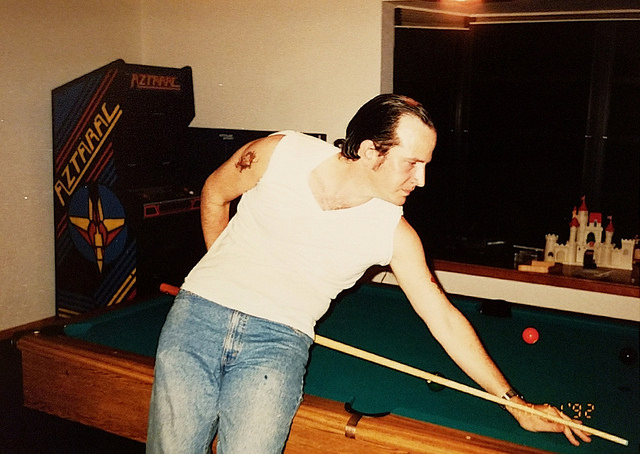
But how did the cabinet re-surface in 2016? Tim’s wife tells me that the machine was taken away for repair by a friend with Tim’s permission, with a view to him tinkering with it in some way. The friend said it might take some time. The Strykers moved out to Utah in 1995, and the machine was left behind.
So Free Play Florida was upon us, and fifteen minutes before the talk was due to start, in a back room away from the crowds, I finally got a chance to see the cabinet first hand:
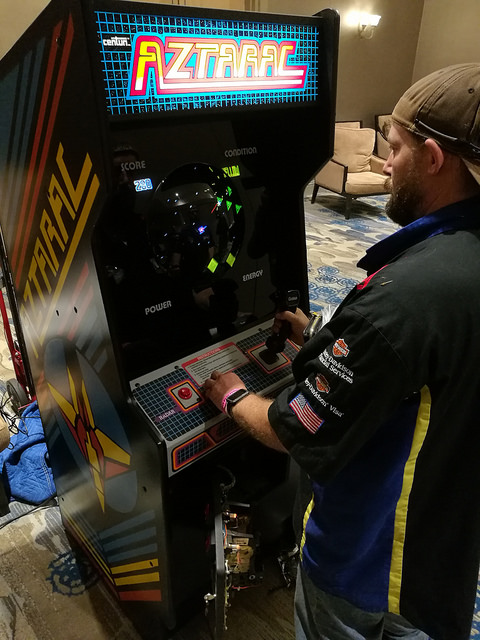

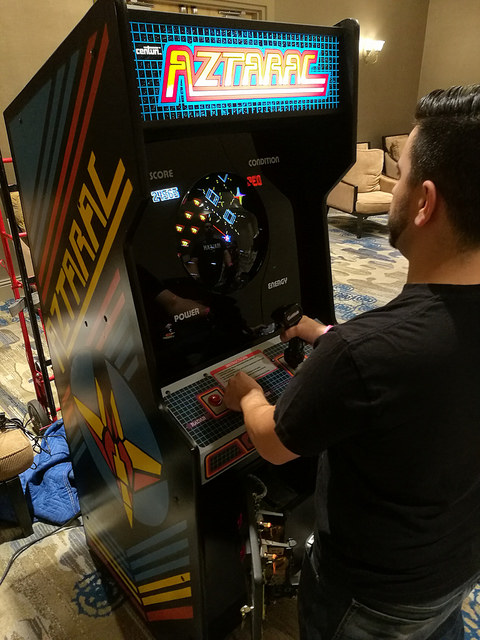
Meeting Tim’s sons and daughter (and their kids – Tim’s grandchildren), his sister Terry, wife Christine and other members of the extended family was an absolute delight – just super-nice people – that they chose to join us for this important historical event, and to see and play Tim’s own machine once more, gave the whole event real meaning.
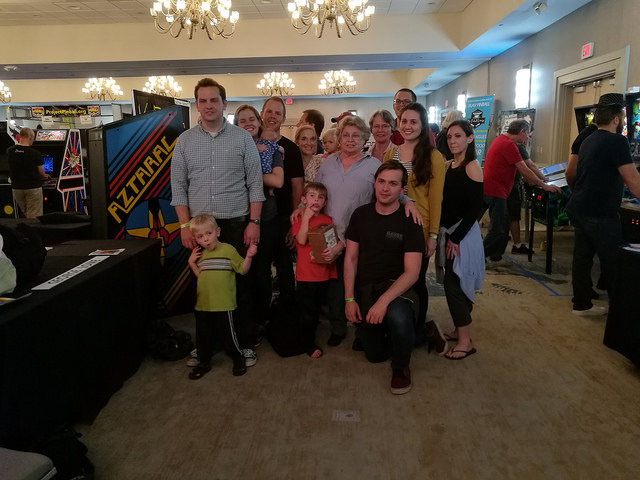
I’m really waffling on here now. But a video speaks a thousand words, so settle down and watch the presentation and reveal of the cabinet as it happened, on November 18th at Free Play Florida 2017. Here’s the full video:
Two things struck me watching that back today:
- I say “um” a lot when presenting.
- There was a moment there where it looked like the game took a dump when it was switched on – but the gods were with us, and as you can see the game glowed into life.
It was so fitting that Tim’s son Ace got to play the first game.

After the talk, the game was wheeled out to the show floor, and the public was able to play the game.

Neil and I were finally able to take a close look at the gameplay, and I shot some footage here of Neil tackling Aztarac’s bright clear vectors:
I would urge anyone reading this to look closely at the gameplay of Aztarac. Given the circumstances, it would be very easy for me to praise the game more than it deserves – but there is so much innovation here. Particularly the implementation of the radar feature – this is something that was missing from the YouTube videos I’d watched before getting my hands on the controls. Much like Defender, the action takes place in a small part of the game’s universe. Using the radar button gives the player a holistic view of what enemies are coming in and from what direction. Seeing this for the first time in action was a real revelation.
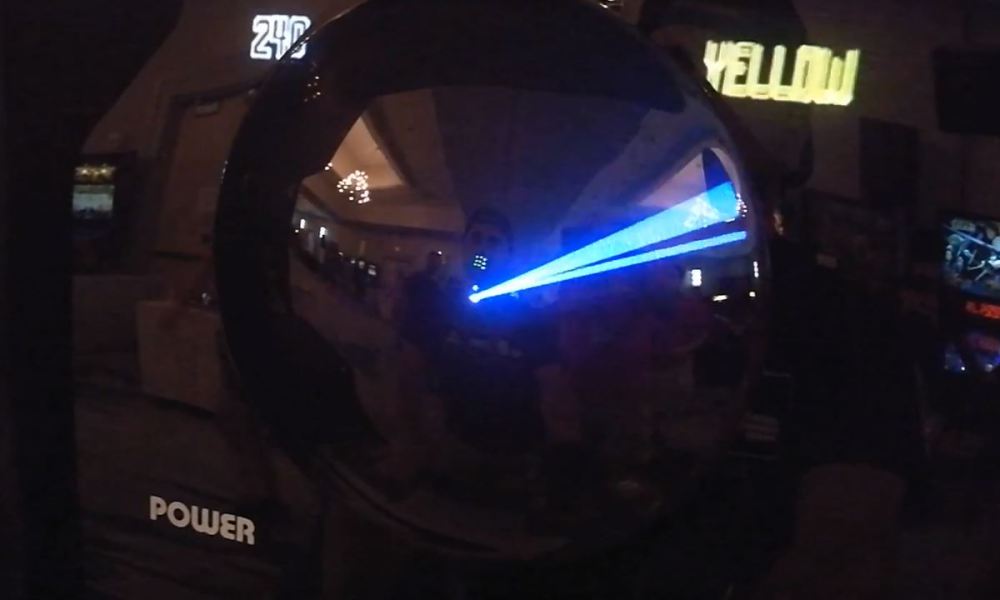
As I alluded to in my talk, the small details that Tim programmed into the gameplay showed just how much love and effort he put into the game. The death animation of the player’s ship – the way it explodes into particles, and then those same particles regroup back to the centre of the screen reviving the ship. It’s just so beautifully done:
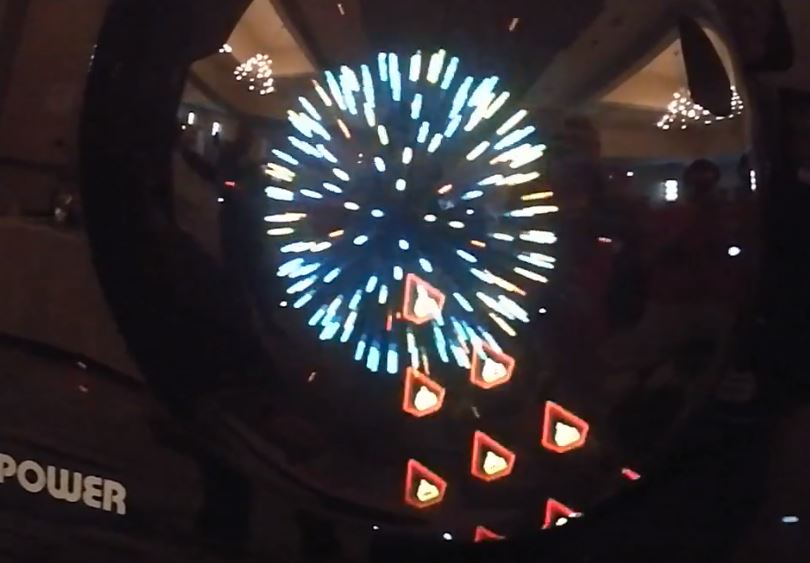
The cinematic opening screen with the scrolling marquee of text explains the features of the game – and uniquely, Tim’s name hidden in the game. These are nice detailed touches from the programmer:

As a classic arcade enthusiast, I can hand on heart say that having played many games over the weekend on the cabinet, Aztarac is without doubt, the best colour vector game I’ve ever played. Tim’s passion, attention to detail and clear desire to create something special just shines through every pore of the game. He wanted this game to be the best it could possibly be. Using state of the art hardware available at the time, only adds to the experience. Those vectors are so bright, and clear – way ahead of anything you could compare it to. To see the joy on people’s faces as they played it during Saturday and Sunday was amazing – it really did create a huge buzz at the event.
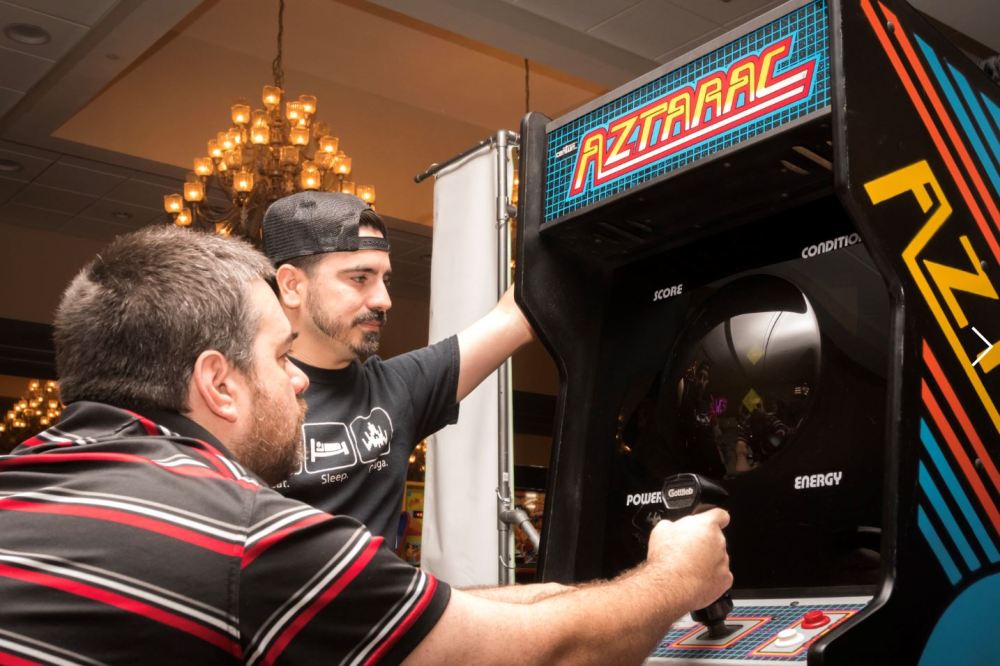
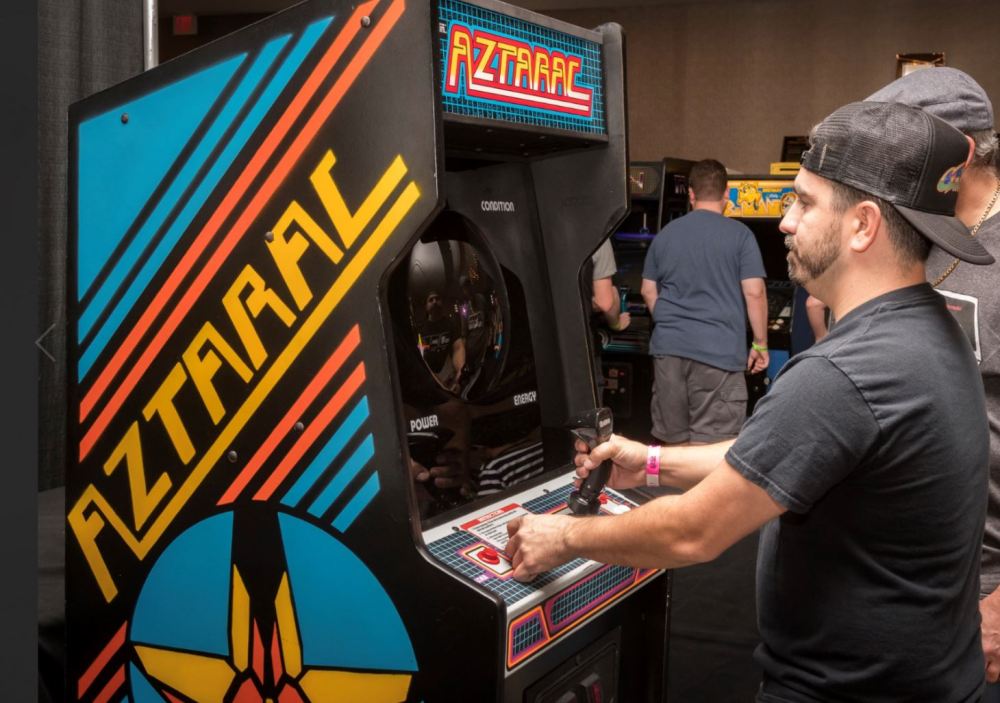
An interesting footnote here – Ace (Tim’s son) tells me that it was generally accepted that Tim wasn’t happy with the final version of the game. There was more he wanted to include, but time constraints meant he was unable to implement these ideas. Again, this really does speak volumes to his talent. The game is spectacular as it is – I wonder what other elements he wanted to add and what effect these might have on the gameplay? I guess we’ll never find out.

Everyone involved in this project signed a large Aztarac banner at the end of the presentation. I’m told this will be displayed publicly very soon. Details are under wraps at present, but watch this space.

There are so many people to thank, it’s hard to know where to start. But I would like to extend my personal thanks on behalf of everyone to:
- Neil Hernandez and his friend Danny, who both in Neil’s own words, “started this mess”, but without whom, none of this would likely have happened.
- Tim’s family, who travelled far and wide to be in Orlando to share the moment with us – thank you all – especially Ace and Terry who shared some great anecdotes about Tim over the weekend. To have had the opportunity to be able to share the experience with you under the circumstances is something I’ll remember for a long time. We even got to speak with Tim’s father, Jerry, via FaceTime!
- The restoration team – Jonathan, Brian, Bill, Andy and Ben – you guys pulled together and achieved the impossible, so that the game could be working and playable on the show floor for the public. Truly amazing work.
- Walter Day for kindly producing Tim’s trading card – in a small way, this cements Tim Stryker’s rightful place in arcade gaming history.
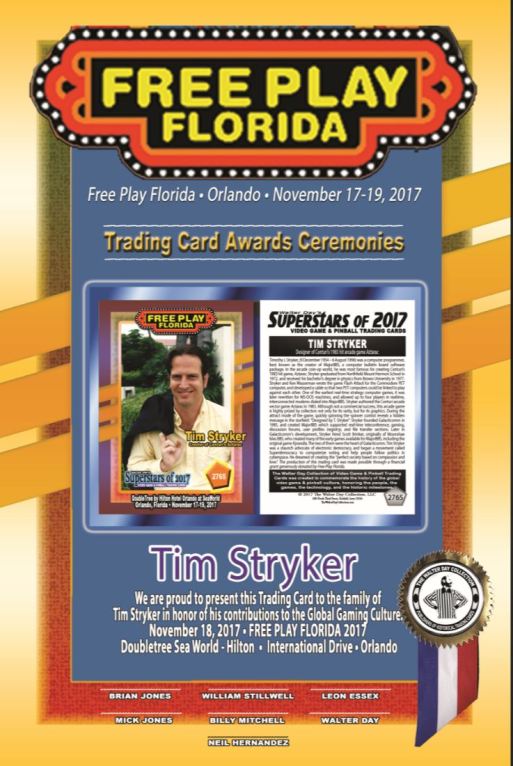
A brief aside here – Walter shared with me an interesting tidbit in the talk about Aztarac.
Twin Galaxies enjoyed the rare distinction of being among only a handful of arcades in the world that actually had an Aztarac on their game room floor. It was December 1983 and the game was brought into Twin Galaxies when we switched game vendors. From the very first moment I saw the game, I considered Aztarac one of the more beautiful games in the arcade universe. And, I loved to play the game and I was a very serious Aztarac competitor at Twin Galaxies. In fact, I stood beside Dennis Bartlett on February 11, 1984 when he scored 142,390 points on the game — a record that still stands today.
On a personal note, it’s been fun digging into this story and being able to share it with the world. The original article spawned something of a monster (sorry everyone!). But meeting and working with everybody involved to make this happen – many of whom have now become good friends – has been so rewarding. Which, ultimately is what this hobby is all about. Thank you everyone – we did an amazing thing here, and I’m sure that somewhere, Tim is smiling down at us with bemusement at the whole thing!
I want to leave you with two images, which I think really sum up this journey we’ve all had with this game. The first shows Tim Stryker, showing his son Ace how to play the machine at their home back in 1992:
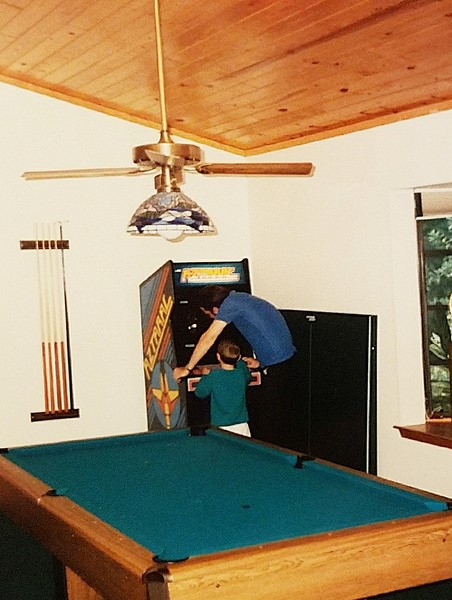
And here, 25 years later, is a much older Ace Stryker, showing his son how to play Aztarac on the exact same machine, at the Free Play Florida event in November 2017:

I’ll leave the final words to Ace:
I was talking with a friend back home yesterday about the story, and it occurred to me that were it up to my dad, Aztarac would likely be only a small footnote to the legacy he hoped to leave behind. And surely there are other things he worked on that affected a great many people. But this game, unhappy as he was with its published state, turned out to mean an awful lot to a great crowd of people we knew nothing about six months ago. It goes to show you that you can do great work in all kinds of ways, and ultimately you have perhaps less control over what people remember you for than you might think.
I am supremely grateful for the care and interest shown by all our new friends, and couldn’t be happier with [the machine’s] current ownership and prospects for future play.
Thank you for reading this week – it was a long one, but I’m sure you’ll agree it was worth it. If you like what you see, I’d appreciate it if you could share this article on social media using the buttons below, and anywhere else you deem appropriate.
Tony

Terrific and moving follow up to what was already a great article about a one in a million find. So happy it could be restored so nicely to ‘factory fresh’. The games graphics and artwork look quite muted with those shorts in the picture though.. ☺
LikeLiked by 2 people
I, like many, I’m sure, am very pleased of this lengthy, in-depth, write-up.
Incredible information and an almost unbelievable story.
Aztarac was a machine so clearly before its time, that fish-eye domed bezel certainly makes it stand out and it has the most beautiful colour vectors I’ve ever seen.
Thanks for sharing the entire story and congrats on taking second place only to the machine itself. Cheers.
LikeLiked by 2 people
Hi Tony. Thanks for this excellent blog post and the well researched presentation. Really enjoyed both, shorts too. Keep up the good work. Dean (lesoleil70)
LikeLiked by 1 person
A beautiful story – as you say, everyone ‘did a good thing here’ and as a member of the audience at the unveiling, it really was a special moment.
And loving your shorts TT – they MUST stay, though in 5 years time I predict they will need a restoration job even more taxing than the Aztarac cab…
LikeLiked by 1 person
Great article, Tony. It was a true pleasure to be in Orlando to share this unveiling with all of you. It was one of the highlights of my weekend and one I will not soon forget. Congrats to the team on putting the game back together in time for the show (no easy task). It was a joy to play!
LikeLiked by 1 person
Another great article and never a dull moment, keep ’em coming! I always doubt how many more of these epic stories are left out there from the golden age of the arcades – so I’m always happily blown away when I get to read another! 🙂
LikeLiked by 1 person
What a great story! Thanks for the write-up!!
LikeLiked by 1 person
Happy Birthday Tim (Dec 9). Great article, one of the most amazing vector games I’ve seen. There was so much that went into this game. This guy was a genius. Back in the day, he connected two Commodore PETs together. He made it happen! Crazy. Thanks for the trip down memory lane and the history lesson.
LikeLiked by 1 person
What a wonderful followup on the saga of my brother’s video game and the way it was brought back to life! Brings tears to my eyes again, as in Orlando. Thank you so much, Tony
LikeLiked by 1 person
Thanks Terry – hope all is well!
LikeLike